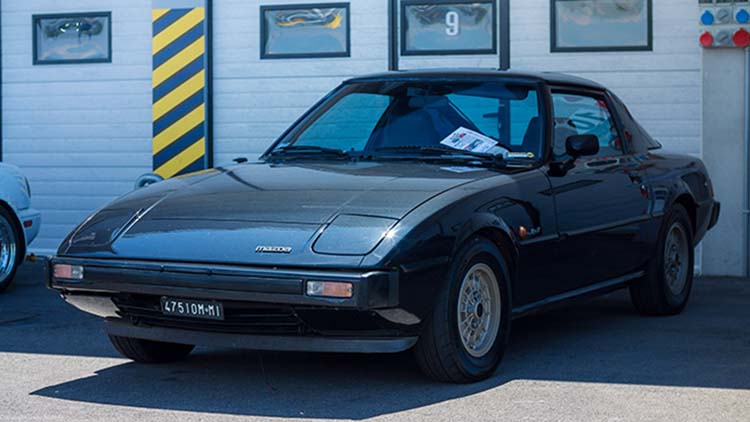Series 1 (1978–1980) is commonly referred to as the "SA22C" from the first alphanumerics of the vehicle identification number. In Japan it was introduced in March 1978, replacing the Savanna RX-3, and joined Mazda's only other remaining rotary engine powered products, called the Mazda Cosmo which was a two-door luxury coupe, and the Mazda Luce luxury sedan.

The lead designer at Mazda was Matasaburo Maeda, whose son Ikuo would go on to design the Mazda2 and Mazda RX-8.[2] The transition of the Savanna to a sports car appearance reflected products from other Japanese manufacturers. The advantage the RX-7 had was its minimal size and weight, and the compact rotary engine installed behind the front axle, which helped balance the front to rear weight distribution, and provide a low center of gravity.
In May 1980, Mazda released a limited production run of special North American models known as the Leathersport Models. This package was essentially an uprated GS model with added LS badges on each B-pillar, special striping, and LS-only gold anodized wheels (with polished outer face and wheel rim). All LS editions came equipped with special LS-only full brown leather upholstery, leather wrapped steering wheel, leather wrapped shift knob, removable sunroof, LS-specific four-speaker AM/FM stereo radio with power antenna (though listed as a six speaker stereo, as the two rear dual voice coil speakers were counted as four speakers in total), remote power door side mirrors, and other standard GS equipment. Two primary options were also available; a three-speed JATCO 3N71B automatic transmission and air conditioning. Other GS options such as cassette tape deck, splash guards, padded center console arm rest and others could be added by the dealer. The LS model was only ever available in three different exterior colors: Aurora White, Brilliant Black, and Solar Gold. No official production records are known to exist or to have been released. This series of RX-7 had exposed steel bumpers and a high-mounted indentation-located license plate, called by Werner Buhrer of Road & Track magazine a "Baroque depression."